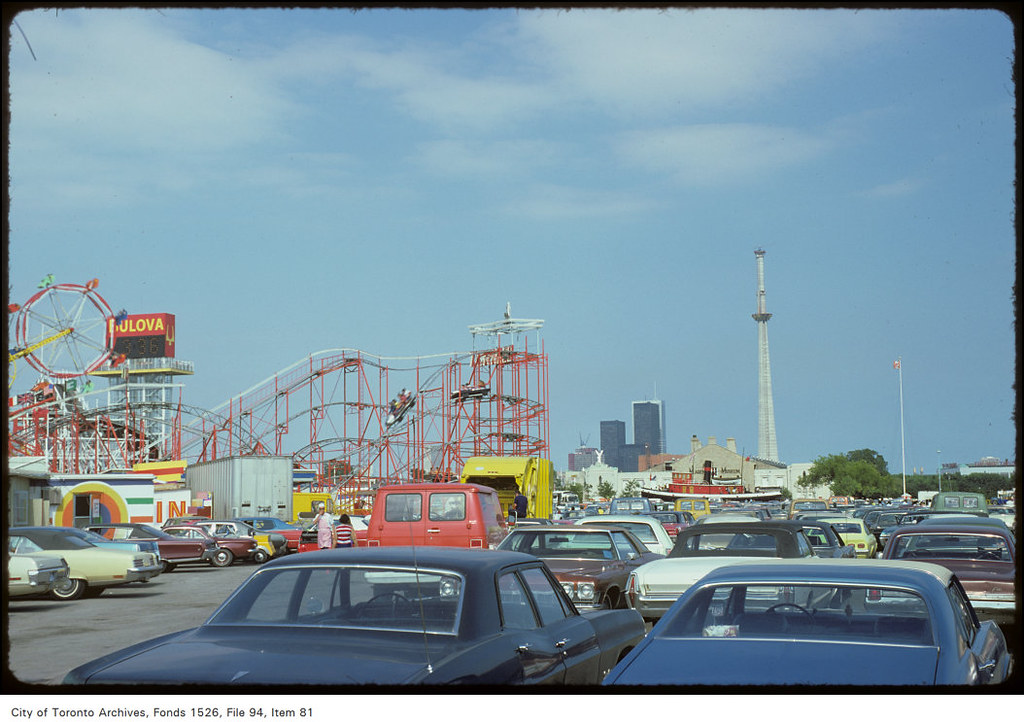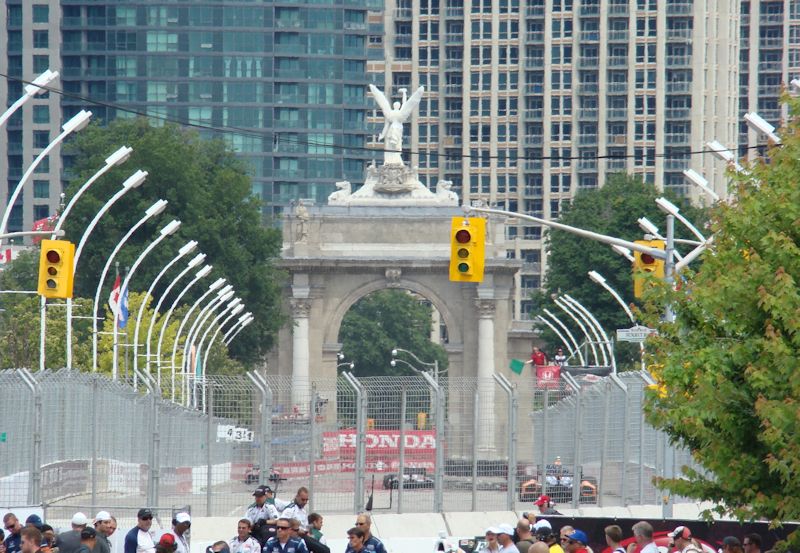For better or worse, the Canadian National Exhibition has evolved with time since it was held in 1879. Early in the event’s history, the CNE provided both a venue to escape and embrace the complexities of late 19th century industrialization for the British commonwealth’s major presence in North America. Serving as a source to observe technological improvements of a quickly opening world, amusement for all ages as well as an overall Canadian showcase, the annual event was a cultural gateway. Today, the CNE has lost some of its luster due to various year-long entertainment options over the decades but continues to be a fun, unofficial standoff to summer with memorable rides and surreal culinary delights.
As the exhibition continued into the 20th century, the grounds underwent various transformations with a number of permanent structures constructed including the still-standing Horticulture Building in 1907 and the iconic Princes’ Gate in 1927. With the conclusion of the second world war, the CNE welcomed a greater number of young families. Inviting new attractions for guests to enjoy entering into the 1950s, a new building was erected presenting a new vantage point. For 1955, the glass and steel Shell Oil Tower would be a shining landmark located beside the midway and Coliseum for 30 years.
Sponsored by the reputable Dutch petroleum company, the Shell Oil Tower was modern-looking structure serving as both observation area as well as a clock tower for the area. Measuring 16 feet in diameter, a round dial analog clock featured numerals stretching three feet in length. In addition, Shell Oil Tower was completely illuminated at night offering an exceptional beacon for the exhibition grounds as well as much of Toronto. According to a Toronto Star article, the face of the clock could be seen from as far back a half a mile. Designed by Toronto architect George Robb, the entire building had a reported cost of $125,000 in 1955.
Before a rapid skyscraper boom that transformed Toronto in the 1960s and 1970s that resulted in the Toronto-Dominion Centre buildings, Commerce Court, Manulife Centre and First Canadian Place exchanging the record for the tallest structure in the city before the opening of the CN Tower, the comparably modest 120-foot (36.576-meter) tall Shell Oil Tower would stand noticed all-year long but would be the new centerpiece of the annual exhibition.
Announced in April of 1955, the tower was quickly completed for August of the same year’s fair. Shell Oil Tower’s ribbon-cutting took place on August 25th presided by CNE president William Harris and Shell Oil president W.M.V. Ash. Following that moment, spectators were given access to the 60-foot wide observation deck for no cost either by walking up one of two stairways consisting each of 139 steps or by the elevator located towards the center. Awaiting them was a birds-eye view of the CNE Grounds, the city of Toronto and out towards Lake Ontario. The observation platform itself stood 90 feet above ground level.
A permanent fixture, the Shell Oil Tower also fulfilled another role detached from the Canadian National Exhibition. Through the late 1950s and early 1960s, a Christmas event was held in the vicinity of the tower. In addition to the bright lights of the building, a large Christmas tree. In 1957, the 76-foot tall tree decorated with more than 4,000 lights was stated to be the tallest Christmas tree in North American according to The Globe and Mail reporter Mary Walpole. Santa Claus, carols as well as gifts and candy were offered to children in attendance for the event that ran from the beginning to December until Christmas Eve. The event also served as a toy drive where donations of used toys were encouraged.
At the start of 1973, the tower on the CNE Grounds underwent a massive revision. With the Dutch oil company backing out of the attraction, premium timepiece company Bulova stepped forward to receive naming rights. Additionally, the rechristened Bulova Tower replaced the original analog clock with a cutting-edge digital board.
 |
Bulova Tower at Image Left (Photo taken by Harvey Naylor and obtained through City of Toronto Archives) |
This refreshed structure provided spectators with a modern sight that continued to invite guests with a pleasureful view. Unfortunately though, the second year of the Bulova Tower provided a constant source of annoyance for attendees. During CNE festivities in August of 1974, the elevator repeatedly broke down baking trapped crowds within the glass box with late summer heat. One instance occurred as temperatures were reported at more than 100 degrees Fahrenheit. According to one story published in the August 22, 1974 edition of the Toronto Star, CNE fire department district capture Andrew Hawe gallantly climbed up the tower’s stairs and down roughly 30 feet down a hot elevator shaft to open the elevator’s top hatch to communicate with the 16 people trapped and provided them with a small fan as they waited for 45 minutes. Hawe totalling between 16 and 29 people inside awaiting for help. Hawe described to the Toronto Star as “It was just like a Sauna bath for those people”. None of the breakdowns of the elevator resulted in serious harm however at least one incident involved a stuck elevator rider falling ill.
 |
Ground view of Princes' Gate from Approximate Location of Shell Oil Tower/Bulova Tower (Photo taken by Chris Nagy in 2014)
In 2015, the construction of Hotel X Toronto on Exhibition Place grounds would result in pit road being moved to the outer portion of circuit. Roughly about three times the height of Shell Oil/Bulova Tower, the skyscraper’s view is restricted to guests of the hotel. For the 2023 edition of the Canadian National Exhibition, attendees can board the Superwheel. Entering one of 36 climate-controlled compartments, the 150-foot Ferris wheel provides a 21st century view of Toronto similar to what a glass and steel clock tower granted for the first time nearly seven decades ago.
References:
125-Foot Lockout Tower Planned In CNE Grounds (pg. 59). The Toronto Star; April 6, 1955
Big Clocks (pg. 12). The Toronto Star; August 5, 1955
CNE elevator ‘a sauna’ to 16 trapped inside (pg. A3). The Toronto Star; August 22, 1974
Ex's Bulova Tower may he demolished (pg. 10). The Globe and Mail; Aug 30, 1985
It’s Time For a Change (pg. 11). The Toronto Star; April 4, 1973
Ribbon-Cutting (pg. 5). The Globe and Mail; August 26, 1955
Sewell, John. A Plea for Retaining the Bulova Tower (pg. A14). The Globe and Mail; November 20, 1985
Walpole,Mary. Around the Town with Mary Walpole (pg. 13). The Globe and Mail; December 20th 1957




Comments
Post a Comment